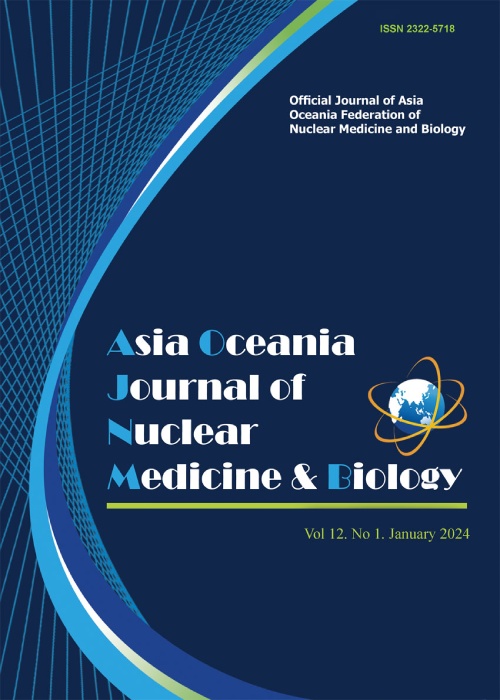Sentinel Node Mapping in Non-small Cell Lung Cancer Using an Intraoperative Radiotracer Technique
Article Type:
Research/Original Article (دارای رتبه معتبر)
Abstract:
Objective(s)
Lymph node metastases are the most significant prognostic factor in localized non-small cell lung cancer (NSCLC). Identification of the first nodal drainage site (sentinel node) may improve detection of metastatic nodes. Extended surgeries, such as lobectomy or pneumonectomy with lymph node dissection, are among the therapeutic options of higher acceptability. Sentinel node biopsy can be an alternative approach to less invasive surgeries. The current study was conducted to evaluate the accuracy of sentinel node mapping in patients with NSCLC using an intraoperative radiotracer techniques.
Methods
This prospective study was conducted on 21 patients with biopsy-proven NSCLC who were candidates for sentinel node mapping during 2012-2014. All patients underwent thoracoabdominal computed tomography, based on which they had no lymph node involvement. Immediately after thoracotomy and before mobilizing the tumor, peritumoral injection of 2mCi/0.4 mL Tc-99m- phytate was performed in 4 corners of tumor. After mobilization of the tumoral tissues, the sentinel nodes were searched for in the hillar and mediastinal areas using hand-held gamma probe . Any lymph node with in vivo count twice the background was considered as sentinel node and removed and sent for frozen section evaluation. All dissected nodes were evaluated by step sectioning and hematoxylin and eosin staining (H&E).The recorded data included age, gender, kind of pathology, site of lesion, number of dissected sentinel nodes, number of sentinel nodes, and site of sentinel nodes. Data analysis was performed in SPSS software (version 22).
Results
The mean age of the patients was 58.52±11.46 years with a male to female ratio of 15/6. The left lower lobe was the most commonly affected site (30.09%). Squamous cell carcinoma and adenocarcinoma were detected in 11 and 10 subjects, respectively. A total of 120 lymph nodes were harvested with the mean number of 5.71±2.9 lymph nodes per patient. At least one sentinel node was identified in each patient, resulting in a detection rate of 95.2%. The mean number of sentinel nodes per patient was 3.61±2. Frozen section results showed 100% concordance with the results of hematoxylin and eosin staining.
Conclusion
Based on the findings, sentinel node mapping can be considered feasible and accurate for lymph node staging and NSCLC treatment.Keywords:
Language:
English
Published:
Asia Oceania Journal of Nuclear Medicine & Biology, Volume:7 Issue: 2, Spring 2019
Pages:
153 to 159
magiran.com/p2000010
دانلود و مطالعه متن این مقاله با یکی از روشهای زیر امکان پذیر است:
اشتراک شخصی
با عضویت و پرداخت آنلاین حق اشتراک یکساله به مبلغ 1,390,000ريال میتوانید 70 عنوان مطلب دانلود کنید!
اشتراک سازمانی
به کتابخانه دانشگاه یا محل کار خود پیشنهاد کنید تا اشتراک سازمانی این پایگاه را برای دسترسی نامحدود همه کاربران به متن مطالب تهیه نمایند!
توجه!
- حق عضویت دریافتی صرف حمایت از نشریات عضو و نگهداری، تکمیل و توسعه مگیران میشود.
- پرداخت حق اشتراک و دانلود مقالات اجازه بازنشر آن در سایر رسانههای چاپی و دیجیتال را به کاربر نمیدهد.
دسترسی سراسری کاربران دانشگاه پیام نور!
اعضای هیئت علمی و دانشجویان دانشگاه پیام نور در سراسر کشور، در صورت ثبت نام با ایمیل دانشگاهی، تا پایان فروردین ماه 1403 به مقالات سایت دسترسی خواهند داشت!
In order to view content subscription is required
Personal subscription
Subscribe magiran.com for 70 € euros via PayPal and download 70 articles during a year.
Organization subscription
Please contact us to subscribe your university or library for unlimited access!


